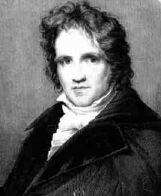

Wilhelm Bessel attended the Gymnasium in Minden for 4 years but he did not appear to be very talented, finding Latin difficult. The fact that he later became proficient in Latin, teaching himself the language, probably suggests that the Gymnasium failed to inspire Bessel. At the age of 14, he left school to become an import-export apprentice in Bremen.
At first Bessel received no salary from the firm, but as his accounting skills became appreciated by the firm he received a small salary. Interest in the
countries his firm dealt with led Bessel to spend his evenings studying geography, Spanish and English. His interests turned towards navigation and he
considered the problem of finding the position of a ship at sea. This in turn led him to study astronomy and mathematics and he began to make observations to determine longitude.
In 1804, Bessel published a paper on Halley's comet. From that time on, he concentrated on astronomy, celestial mechanics and mathematics. In 1806, he accepted the post of assistant at a private observatory near Bremen. Bessel's brilliant work was quickly recognized. He was appointed director and professor of astronomy at a new observatory in Königsberg . It was not possible for Bessel to receive a professorship without first being granted the title of doctor. A doctorate was awarded by the University of Göttingen on the recommendation of Gauss, who had met Bessel in 1807 and recognized his talents.
Bessel's work had now become known internationally, and he was honored
with the award of the Lalande Prize from the Institut de France for his tables of refraction based on Bradley's observations. He used Bradley's data to give a reference system for the positions of stars and planets and also to determine the positions of stars. He had to deduce errors in Bradley's instruments and errors caused by refraction. He had to reduce the positions to one fixed date and eliminate the effects of the Earth's motion, the precession of the Earth and other effects.
Bessel's work in determining the constants of precession, nutation and aberration won him many honors. in 1812, he was elected to the Berlin Academy, and won a prize from the Berlin Academy in 1815. In 1825 he was honoured by election as a Fellow of the Royal Society.
Bessel remained in Königsberg for the rest of his life, pursuing his research and teaching without interruption. He undertook his monumental task of determining the positions and proper motions of over 50,000 stars. From periodic variations in the proper motions of Sirius and Procyon, Bessel deduced that they had companion stars in orbit which had not been observed. He announced that Sirius had a companion in 1841, thus being the first to predict the existence of "dark stars".
Bessel used parallax to determine the distance to 61 Cygni, a nearby star, announcing his result in 1838. The Royal Astronomical Society awarded him their gold medal to mark this achievement.
In 1817, Bessel also worked out a method of mathematical analysis involving what is now known as the Bessel functions. The interest in these functions arose in the treatment of the problem of the perturbation in the planetary system. This special class of functions that have become an indispensable tool in applied mathematics, physics and engineering.
He also made contributions beyond astronomy and mathematics. His contributions to geodesy
include a correction in 1826 to the seconds pendulum, the length of which is precisely calculated so that it requires exactly one second for a swing. In 1841 he deduced a value of 1/299 for the ellipticity of the Earth, the amount of elliptical distortion by which the Earth's shape departs from a perfect sphere.
Bessel also had a very significant impact on university teaching despite the fact that he never had a university education. Bessel, Jacobi, and Neumann are intimately linked to the reform of teaching at universities, first in Germany and then throughout the world.